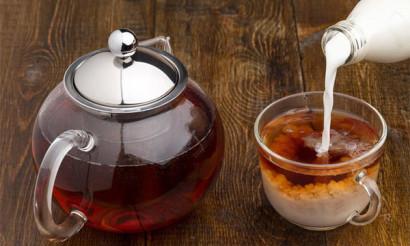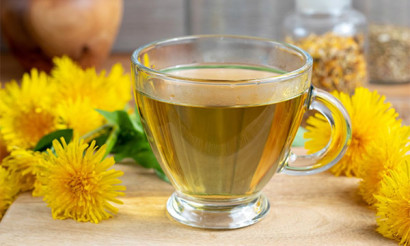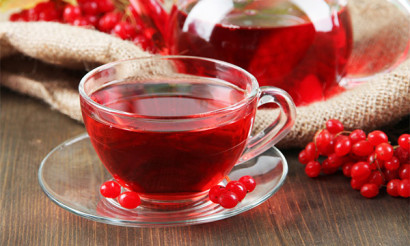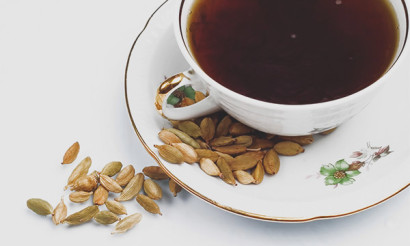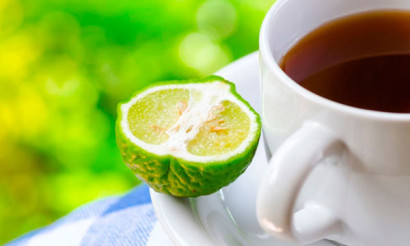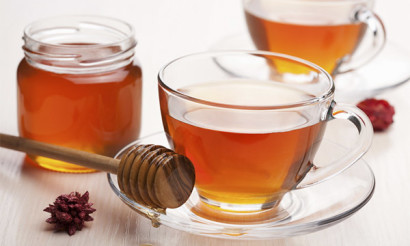Tea from lingonberry leaves: benefits and harms
Lingonberry is a wild berry with excellent taste and beneficial properties. But not everyone knows that lingonberry leaves provide the body with benefits no less than a berry. They are used not only as a means to treat various diseases. From the leaves you can also brew a great drink. It quenches thirst and has a good diuretic effect.
- Composition and calorie content
- Useful properties of lingonberry tea
- General benefit
- For women
- For men
- During pregnancy
- When breastfeeding
- For kids
- When losing weight
- Harm and contraindications
- Collection and storage of lingonberry leaves
- How to dry
- Cowberry Tea Recipes
- Plain classic
- A tea recipe that will tone up
- For those who want to lose weight
- Caution!
- Lingonberry leaves in cosmetology
- Interesting facts about lingonberries
On hot days, a drink with brewed berries and lingonberry leaves tones and refreshes. It will help in restoring water balance, replenishing the supply of vitamins, and removes swelling.
Composition and calorie content
As soon as the snow melts, you can begin to collect the leaves of lingonberry. Until the flowering period begins, they have more power. Leaves contain:
- tannins - from 17 to 23%;
- organic acids;
- vitamins (especially group B);
- macro- and microelements (selenium, iron, zinc, silver);
- from 6 to 9% arbutin;
- hyperoside - has diuretic and antiviral activity.
The above substances are present in leaves in a fairly large amount. This indicates the presence of therapeutic effects.
The calorie content of tea from lingonberry leaves per 100 g of product is only 26.4 kcal.
Of them:
- proteins - 0.02 g;
- carbohydrates - 7 g;
- fat - 0.02 g.
Useful properties of lingonberry tea
General benefit
The composition of lingonberry leaves includes a number of vitamins, trace elements, tannins, flavonoids, antioxidants, organic acids. Due to this saturation, tea from lingonberry leaves has a number of useful properties.
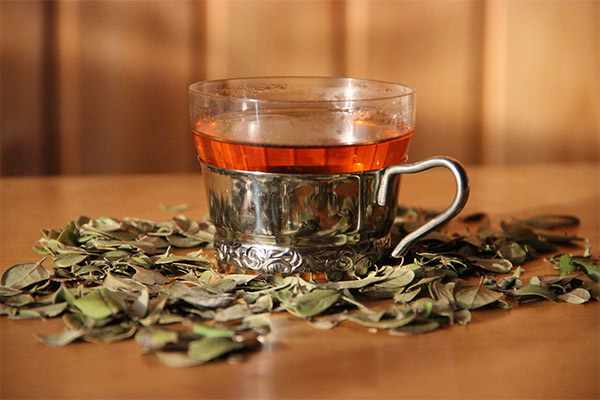
- Due to the large amount of vitamin C contained in the plant, it strengthens the immune system and restores the natural barrier in the fight against colds. It is especially good to drink this tea in autumn and winter. During this period, he is an excellent assistant in the fight against SARS.
- Due to its tonic properties, it restores strength well. It is useful for people who have had severe infectious diseases, for women in the postpartum period.
- Helps to recover after a course of strict diet and hard training.
- Useful for diseases of the intestines and cavity of the stomach, has an anti-inflammatory effect. Gastritis and ulcers require the use of tea only from leaves. Add fresh berries is contraindicated.
- Effective in the fight against indigestion and poisoning. In this case, astringent actions of tea from lingonberry leaves work.
- It has antifungal, anti-inflammatory and antiseptic properties when applied externally.
- Helps to alleviate stress, forget the problems that occurred at work, eliminates anxiety and irritability. Useful for people suffering from weather dependence and frequent headaches. Quickly relieve discomfort, dilate blood vessels.
- It relieves puffiness, removes bags under the eyes, removes excess fluid from the body, as it is an excellent diuretic. People suffering from cystitis, taking a drink will help to forget about pain and frequent urge to the toilet.
- It has an antipyretic effect, with a cold it helps to reduce fever.
- Very useful for people with diabetes. Reduces blood sugar due to the content of active substances in its composition.
- Useful for lactation. During this period, tea must be made from young leaves. In this case, the milk will become more fat and nutritious. Its quantity will increase.
It is also useful to drink this drink:
- with oncology;
- prostate;
- kidney disease;
- toxic poisoning;
- viruses and infections.
But you need to start drinking tea from cranberry leaves after studying the contraindications for admission.
For women
Lingonberry leaves - this is the most that neither is a source of health and beauty for a woman. If you use this plant correctly, you can get rid of many female diseases over time. Lingonberry leaves are also often used in cosmetology.
This tea for a woman will be a good remedy for weight loss. The content in the leaves of a large number of vitamins, valuable acids and trace elements will help improve metabolism.
Another important point: after drinking a course of tea from dried lingonberry leaves, you can get rid of excess fluid and remove toxins from the body. The product will help cleanse the body, facilitate the work of the stomach, intestines, kidneys and liver.
For men
Tea made from the leaves of the plant will be a good helper in the treatment of prostatitis. This disease proceeds against the background of the inflammatory process, and the chemical composition of lingonberry leaves creates a strong anti-inflammatory effect. Tea can be used as an adjunct to the primary drug treatment process.
During pregnancy
At that moment, when the expectant mother is carrying a baby, she needs vitamins as never before. In tea with lingonberry leaves, a large number of them. Due to this, during pregnancy, a woman's body can make up for the deficiency of certain groups of vitamins. You need to take such a drink in courses, after agreeing on the start of the reception with a doctor.
Swelling is another problem that can cause discomfort during pregnancy. Pronounced edema becomes in the last weeks of pregnancy. It is possible to remove excess fluid from the body. For this, the expectant mother needs to drink lingonberry tea.
Tea is prepared as standard. It is recommended to use it 30 minutes before a meal, twice a day. One serving is 100 ml. You can drink no more than 1 cup per day.
Drinking tea during early pregnancy is undesirable. At this time, it can increase the tone of the uterus.
When breastfeeding
When breastfeeding, tea with leaves of lingonberries will be of great benefit to mom and baby. Drink a drink in order to increase the amount of milk. The course of admission can only begin after consultation with a specialist. There is a simple explanation for this. All the properties that are in the lingonberry leaf are transferred to the baby during feeding along with mother's milk.
For kids
The leaves of the plant contain many vitamins and antioxidants, which are so necessary for children's health. Vitamin C helps to reduce the risk of seasonal and viral diseases, and strengthens the immune system. A sufficiently large amount of it is contained in the leaves of the plant. Reception of tea with plant leaves helps with a general weakness of the body and poor appetite in a child.
Also, the decoction can be included in the treatment complex if the child has problems with the genitourinary system, especially if the disease is associated with kidney inflammation. It is necessary to carry out treatment under the supervision of a physician. Tea is an aid in the fight against the disease.
A pediatrician’s permission will also be needed if tea with lingonberry leaves is taken as a vitamin remedy. He will talk about the methods of administration and dosages.
In the first year of a child's life, tea based on a decoction can be taken in small quantities, and only as directed by a doctor. One teaspoon 3 times a day is the norm for therapeutic purposes. If the drink is taken for prevention, then the dosage is reduced.
When losing weight
The leaves of the plant contain tannin. It contributes to the normalization of the digestive system. This is true for people on a diet. Tea helps cleanse the body of toxins, which is important, and helps to improve metabolism and normalize blood sugar. On this basis, if you drink tea during any diet, the effect will increase.
Harm and contraindications
Tea from lingonberry leaves may not always be useful, but in some cases, using it can harm the body.It is impossible to say 100 percent that this drink is harmful, but a certain category of people should use it with caution or even refuse such a drink.
Who should refrain from drinking such tea:
- people with low blood pressure;
- those who suffer from liver disease (insufficiency);
- sick stomach ulcer;
- persons with increased acidity of the stomach;
- pregnant women (as a result of consumption, the tone of the uterus may increase);
- patients during exacerbation of any diseases of the digestive system.
People with individual intolerance and a tendency to allergic reactions should take such a drink with care. Children under 12 years old are not recommended to brew such tea. It is possible to treat a disease only with the permission of the attending physician. Overdosing with a drink can cause nausea. If such a reaction occurs, you should temporarily stop drinking tea.
Collection and storage of lingonberry leaves
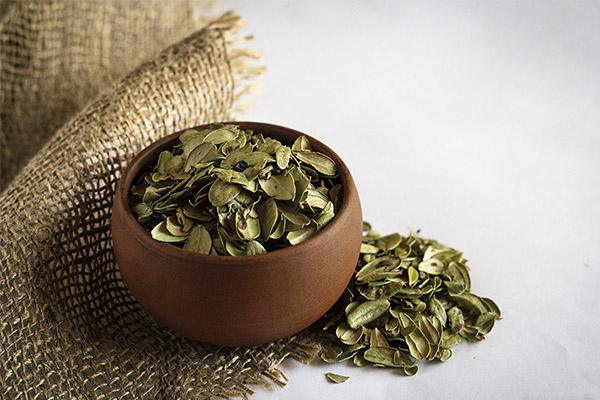
Lingonberry leaves are collected in autumn and spring. In spring, you need to have time to collect the leaves before the plant begins to bloom. In autumn, you can start collecting leaves after the fruits are fully ripe. Collecting leaves in the summer is useless. In the drying process, they will become brown.
Harvesting of raw materials is done manually, cutting off the shoots with scissors. Shoots are separated from the leaves upon completion of drying. The leaves that were collected at the moment when the snow was melting are the most valuable and high-quality.
When harvesting raw materials, you should not tear out a plant with rhizome. It must be remembered that lingonberries reproduce vegetatively. Next time, it is possible to prepare leaves in the same area in 5–10 years. That is how much time it will take to restore lingonberry thickets.
Leaves should be scattered in the attic with good ventilation in a thin layer or in a room with unhindered access of air.
How to dry
It doesn’t end with collecting leaves. This is only half the distance traveled. The next task is the preservation of useful properties during drying. How to do it right?
Raw materials can be dried naturally:
- at room temperature;
- in dry weather under a canopy.
The main thing is that raw materials must be collected on time and in dry weather. It must be cleaned (not washed) from the contaminants present on it. Next lay on the surface. It should be even and clean. Previously, the surface should be covered with paper or cloth. Leaves should not be exposed to direct sunlight. From time to time they need to be turned over. When the leaves begin to turn black or brown during drying, this only indicates one thing - the process is disturbed. Such a product is not suitable for use.
If there is doubt in the first method, then you can process the leaves in an oven or electric dryer for greens and vegetables. The door in the cabinet must be kept half open at a temperature not exceeding 40 degrees. It takes 5 hours to process. But this figure is not always correct. The readiness of the leaves is best determined by their condition.
A sign of the readiness of the raw materials is the slightly bent down edges on all the leaves. The upper part of the leaves is darker than the lower. The top of a properly dried leaf should remain naturally green.
The best storage containers are paper bags or wooden boxes. It is recommended to store leaves in a dry room. A humid environment will violate the beneficial properties of the product.
If the process occurs with the use of a household electric dryer, you must definitely clarify the load volume of the device and familiarize yourself with the instructions for use. Compliance with all the rules is the key to an excellent result.
Cowberry Tea Recipes
In the CIS, tea is an integral part of everyday life. We can say that tea drinking has long become a tradition.This hot drink can safely be called an alternative to coffee. There are many variations of this drink. People experiment, add various ingredients to it to get a new and unique taste.
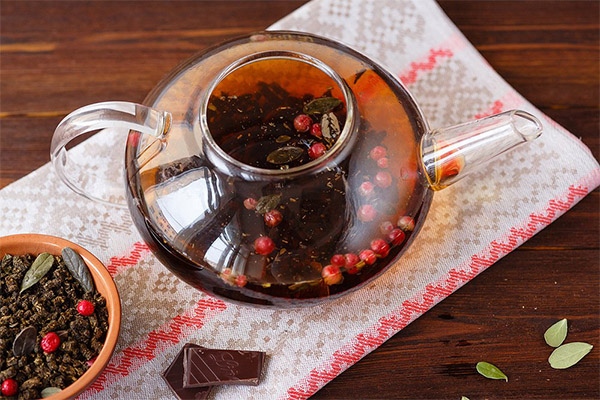
Lingonberry tea is a drink proven by more than one generation. Those who drank this tea cannot but note its excellent aromatic and taste qualities. But this is not all; it has a lot of positive effects on the human body. It contains a large number of nutrients and vitamins. Raw materials for cooking can be not only berries, but also leaves. They must undergo pre-treatment without fail.
Now there are many recipes for making lingonberry tea. The drink can not only be drunk, but also actively used in traditional medicine to treat many ailments. Also, the fruits and leaves of lingonberry during the preparation of tea can be combined with other useful plants. This will create a double effect in the fight against diseases. Consider some recipes.
Plain classic
To prepare, you must perform the following steps:
- 1 liter of boiling water pour 2-3 tbsp. tablespoons of dried leaf;
- leave to infuse for 30 minutes;
- strain and divide into 3-4 equal parts.
The resulting drink can be drunk both warm and cold, it all depends on preference. If you wish, you can dilute it with honey or sugar. Store such tea in the refrigerator. The storage vessel must be tightly closed. Shelf life - no more than 2 days. The drink is recommended to be taken after a meal in a heated form. At one time - no more than 70 ml.
A tea recipe that will tone up
This recipe will help to raise a bad mood and at times increase the surge of energy. To prepare, you must perform the following steps:
- Cook 2 tsp. dried lingonberry leaves, mix with 3 tsp plain leaf tea.
- Add one stick of cinnamon.
- Pour the resulting mass with 500 ml of boiling water.
- Cover and let stand for 15 minutes.
After tea you need to drink in small sips. You can dilute the taste with your favorite sweets.
For those who want to lose weight
If the goal is to lose weight, you can use this recipe for tea with lingonberries and ginger.
To prepare, you must perform the following steps:
- take ginger (2-3 cm), cut into small pieces, add 1 tbsp. lingonberry berries;
- the resulting composition pour 1 liter of boiling water;
- insist a drink, its temperature should be equal to room temperature;
- take a strainer and strain.
You can add honey, it will sweeten the tea.
There is another recipe for making slimming tea using plant leaves. The following steps need to be done:
- take 40 g of dry leaves;
- pour them with a liter of water;
- stand in a steam bath for 20 minutes;
- strain through a medical gauze or strainer.
The course of taking such tea lasts for a month. Drink a drink three times a day. After completing the course, you need to take a week break. The result is the loss of a couple of extra pounds. This effect is possible due to the diuretic effect.
Caution!
Do not forget that tea and drinks from lingonberry raw materials are a remedy. It is impossible to use them every day, like drinking. In most cases, the course of taking tea from lingonberry raw materials should not exceed two weeks. After that, rest should be done for 10 days.
People who have high acidity should be treated with caution. And for women during pregnancy, such healing drinks can be drunk with the permission of the gynecologist.
It must be remembered that tea from lingonberry leaves is the strongest diuretic drink. In cases with weight loss, you need to remember that uncontrolled intake of tea can lead to leaching of potassium and dehydration of the body.
Lingonberry leaves in cosmetology
The fruits and leaves of the plant are used for cosmetic purposes.The beneficial properties of this plant will be a good helper in skin and hair care.
- With hair loss, berries and leaves of the plant will help stop the process, as they have astringent strengthening properties. Berries can be used to make medical masks, and from the leaves - a decoction for rinsing.
- For a person suffering from dandruff, the plant will become an indispensable tool. It will soften the skin and relieve unpleasant itching.
- Decoctions and infusions from the leaves of the plant will help give shine and softness to sick hair.
Also, the plant will help get rid of annoying acne, give the skin elasticity and soften it, prevent premature wrinkles.
Interesting facts about lingonberries

- In Latin, the appearance of this plant is called the "vine of grapes from Mount Ida." Nowadays, it is a popular island of Crete among tourists.
- Lingonberry flowering begins in early summer and lasts only a fortnight.
- The berries of the plant tolerate low temperatures fairly well. Once under the thickness of the snow, they do not lose most of their properties.
- For lingonberry bushes, the harsh climate is not terrible. They can grow in the mountains and tundra.
- Lingonberries were cultivated in Russia in the 18th century. The attempt was unsuccessful. It turned out to achieve results only in the 60s of the twentieth century.
- Cultivated plantations with berries surprise with their productivity. Unlike their forest counterparts, berries are harvested 30 times more on such plantations. One hundred parts pleases the farmer with 50-60 kg of selected berries per year.
- The berry is widely used in many countries of the world. Marmalade is prepared from it, candied, jam and various marinades are boiled, dried. Lingonberry jam is recognized as a national delicacy in Sweden.
- Ordinary cowberry fruit juice is mentioned by the great Russian poet A.S. Pushkin in the poem "Eugene Onegin." There, this drink was called "Lingonberry Water." It was mentioned that the drink was stored in the cold, thanks to this all the beneficial properties were preserved.
- After collecting the leaves for three years, you can prepare a medicine from them. Scientific medicine has developed many tinctures and solutions based on lingonberry leaves. They are used as antiseptics.
- Lingonberry berry has a double - bearberry. They are almost impossible to distinguish.
- The lack of vitamins can be made up with fresh lingonberries. The berry is an excellent choleretic, antiseptic and laxative.
- Decoctions from the leaves of the plant help in the treatment of many serious diseases (gout, diabetes, rheumatism).
- High blood pressure can be normalized if you drink cranberry juice or fruit drink.
- The word lingonberry came from the old Russian word "lingonberry". Translated to modern, it means red.
- Lingonberry in ancient times was called a berry, which harms the body of men.
- The life cycle of a lingonberry bush can be compared to a mighty tree such as oak. And he lives about 300 years.
«Important: all information on the site is provided exclusively in fact-finding purposes. Before applying any recommendations, consult with a profile specialist. Neither the editors nor the authors are liable for any possible harm caused materials. "

